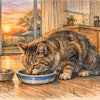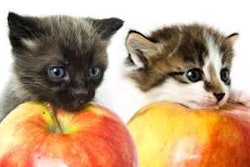The aim of this study was to elucidate the impact of a high-fat, high-fructose diet (HFFD; fat, 52%; fructose, 17%), in the presence of a partial (~65%) pancreatectomy (PPx), on the response of the liver and extrahepatic tissues to an orally administered, liquid mixed meal. Adult male dogs were fed either a nonpurified, canine control diet (CTR; fat, 26%; no fructose) or a HFFD for eight weeks. Dogs underwent a sham operation or PPx.
Postprandial glucose concentrations were significantly greater in the HFFD group than in the CTR group. Impaired glucose tolerance in HFFD was due in part to accelerated gastric emptying and glucose absorption, as indicated by a more rapid rise in arterial plasma acetaminophen and the rate of glucose output by the gut, respectively, in HFFD than in CTR. It was also attributable to lower net hepatic glucose uptake (NHGU) in the HFFD group compared to the CTR group, resulting in lower hepatic glycogen synthesis (GSYN) in the HFFD group than in the CTR group. HFFD also displayed aberrant suppression of lipolysis by insulin.
HFFD feeding accelerates gastric emptying and diminishes NHGU and GSYN, thereby impairing glucose tolerance following a mixed meal challenge. These data reveal a host of deleterious metabolic consequences associated with consumption of HFFD.
Source : K.C. Coate et al., 2011. A high-fat, high-fructose diet accelerates nutrient absorption and impairs net hepatic glucose uptake in response to a mixed meal in partially pancreatectomized dogs. J. Nutr. 141:1643-1651.














